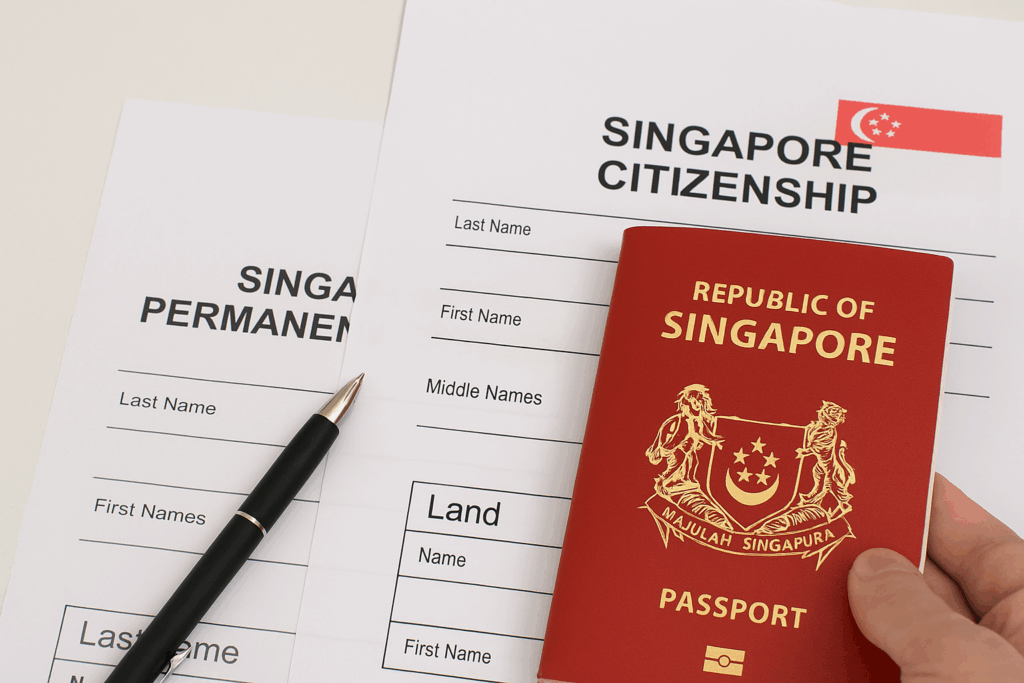For many long-term residents in Singapore, obtaining Permanent Residency (PR) is a major milestone. However, it often raises the question of whether to eventually take the next step and become a Singapore citizen. Both PR and citizenship offer unique advantages and responsibilities, and understanding these distinctions is essential before making such an important life decision.
This guide explores the differences, benefits, and considerations to help you choose the path that aligns with your personal, professional, and family goals.
Understanding Singapore Permanent Residency (PR)
Singapore PR is a long-term residency status that grants foreign nationals the ability to live, work, and study in the country without the need for separate work permits or passes. It’s a popular choice for professionals, investors, and family members of Singapore citizens or PRs.
Some key benefits of holding PR include:
- Employment flexibility: Freedom to change jobs without reapplying for a work visa.
- Education opportunities: Priority admission for children into public schools at lower tuition fees compared to foreigners.
- Healthcare access: Eligibility for subsidies at public hospitals and clinics.
- Pathway to citizenship: PR is the required stepping stone before applying for Singapore citizenship.
- Access to CPF retirement benefits in full, with rates that gradually increase for new PRs over the first two years before reaching the full rate.
However, PR holders must renew their Re-Entry Permit (REP) every 5 years to maintain their status when travelling abroad.
Understanding Singapore Citizenship
Becoming a citizen offers the highest level of rights and security in the country. Singapore Citizenship can be applied for after a minimum period as a PR (usually 2 years, though longer stays may strengthen your case).
Key benefits of citizenship include:
- Full voting rights and participation in Singapore’s political process.
- Freedom from REP renewals, as your status is permanent.
- Citizens enjoy more comprehensive CPF benefits, including more favorable withdrawal conditions and access to higher payouts from the Retirement Account (RA) later in life.
- Eligibility for a Singapore passport, ranked among the world’s most powerful for visa-free travel.
- Greater priority for housing under HDB schemes, as well as education benefits.
- Additional government financial benefits, such as the baby bonus and GST vouchers, which are not available to PRs.
However, Singapore does not allow dual citizenship, meaning you must renounce your current nationality to become a citizen.
Key Differences Between PR and Citizenship
| Aspect | Permanent Residency | Citizenship |
|---|---|---|
| Voting rights | Not eligible | Eligible |
| Passport | Keep current nationality | Singapore passport only |
| Re-Entry Permit | Renewal every 5 years | Not required |
| CPF & benefits | Partial access | Full access |
| Housing priority | Lower than citizens | Highest priority |
| National Service (NS) | Male children liable | Male children liable |
Decision Factors: Should You Remain a PR or Become a Citizen?
Choosing between remaining a PR and applying for citizenship depends on your personal situation. Some key decision points include:
1. Commitment to Singapore
If you see Singapore as your long-term or permanent home, citizenship provides greater stability. PR may be more suitable if you plan to keep strong ties abroad.
2. Travel and Mobility
A Singapore passport offers extensive visa-free access globally. If international mobility is a high priority, citizenship could be beneficial.

3. Family Considerations
Citizenship can bring advantages in education and housing for your family. However, PR status still offers strong benefits without giving up your original nationality.
4. Financial Planning
Citizens enjoy more government subsidies, higher CPF benefits, and better housing loan terms. PR holders still get partial CPF contributions and some subsidies.
The Application Process
Both PR and citizenship applications are managed by the Immigration & Checkpoints Authority (ICA). The process typically involves:
- Completing the e-PR or citizenship application form.
- Submitting supporting documents such as employment details, income tax records, and educational certificates.
- Attending an in-person interview or verification appointment.
Processing times can vary, often taking several months. Strong applications usually highlight long-term integration into Singapore society, stable employment, and family ties.
Pros and Cons Summary
PR Pros:
- Maintain foreign nationality
- Strong work and education benefits
- Lower commitment
PR Cons:
- REP renewals required
- Fewer government subsidies
Citizenship Pros:
- Full benefits and rights
- Singapore passport
- Higher housing and education priority
Citizenship Cons:
- Must renounce other citizenships
- Full National Service obligations for male children
Conclusion
Both PR and citizenship provide excellent opportunities for a stable and prosperous life in Singapore. PR offers flexibility and strong benefits, while citizenship grants the fullest rights and integration into the nation.
Your choice should reflect your long-term goals, lifestyle preferences, and willingness to fully commit to Singapore. Whether you decide to remain a PR or apply for citizenship, understanding the differences ensures you make a well-informed decision for you and your family.
Frequently Asked Questions
At least 2 years, though longer stays with strong integration can improve approval chances.
No. Singapore requires you to renounce your original citizenship.
Male children granted PR under their parents’ sponsorship, or male students who study in Singapore with at least one national examination passed, or are enrolled in the Integrated Programme (IP), are liable for NS.
Yes. Citizens have more housing options and a greater priority in HDB purchases.
It can take up to 12 months or more, depending on application volume and individual circumstances.

